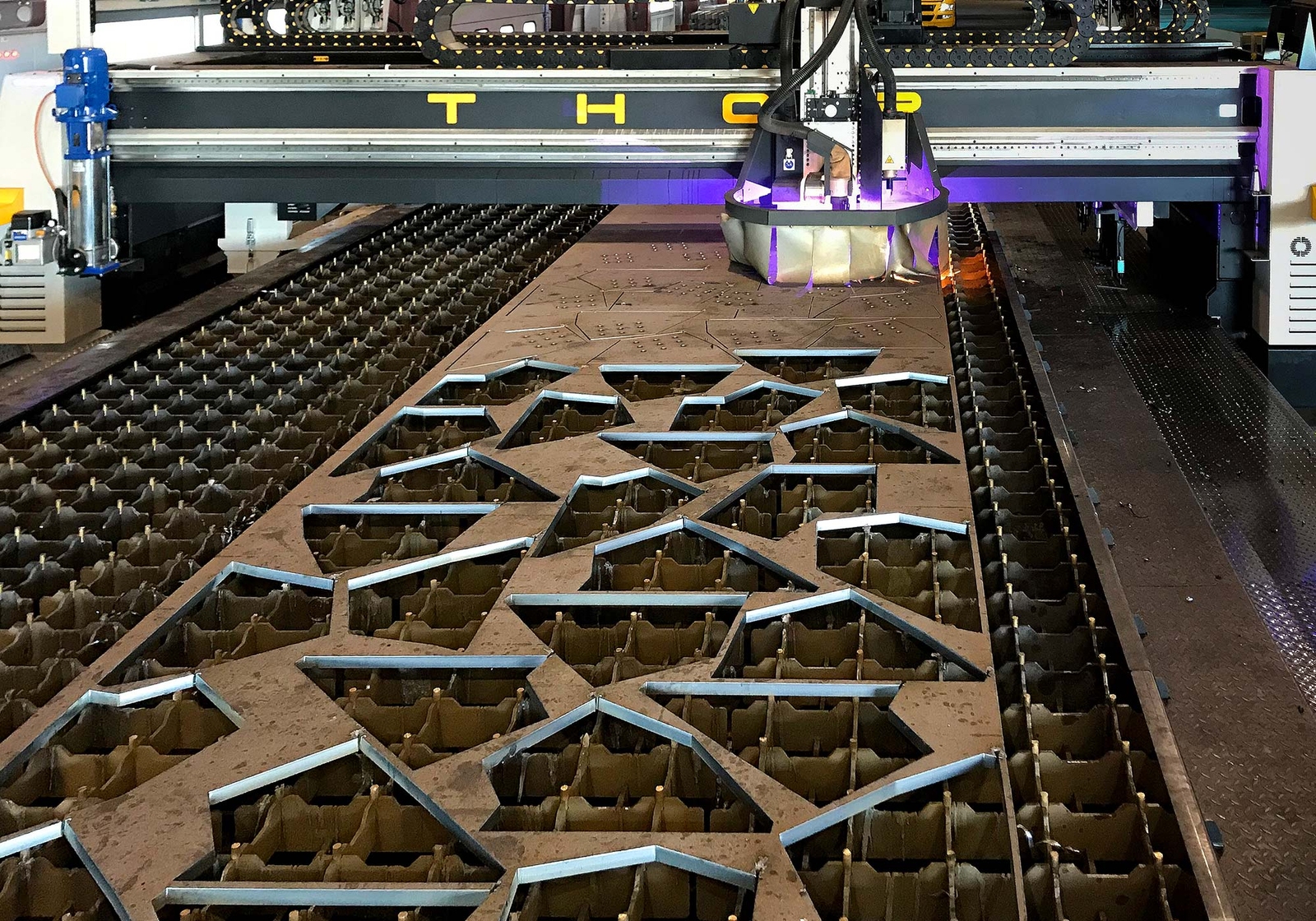Why Alpha Reo Is the Top Selection for Steel Support
Why Alpha Reo Is the Top Selection for Steel Support
Blog Article
Ingenious Patterns in Steel Manufacture: Enhancing Durability and Accuracy
In the world of steel fabrication, the search of resilience and accuracy has actually led to a wave of innovative trends that are reshaping the industry. These patterns are not simply forming the present but also laying the foundation for the future of steel fabrication, promising additional enhancements in toughness and precision.
Advanced Welding Technologies
In the realm of steel construction, the fostering of sophisticated welding modern technologies has significantly transformed the market's method to accomplishing remarkable quality and precision in structural welds. Advanced welding technologies, such as laser beam welding and friction stir welding, have become game-changers in the area. Laser beam of light welding utilizes a focused laser beam to join steel elements with exceptional accuracy and speed, making it ideal for elaborate styles and thin materials. On the various other hand, rubbing stir welding produces incredibly strong bonds by mechanically intermixing the particles of the products at the joint, eliminating the requirement for thawing the metal. These innovations offer numerous advantages, including decreased heat-affected areas, minimal distortion, and boosted mechanical residential properties in the welded joints. By leveraging these sophisticated welding techniques, steel makers can raise the sturdiness, strength, and precision of their structural welds, meeting the progressively demanding needs of contemporary building projects.
Robotic Automation in Manufacture
Embracing robotic automation has actually come to be a cornerstone of modern-day steel manufacture practices, boosting and enhancing processes effectiveness throughout the industry. Robots are changing the way steel components are produced, offering exceptional accuracy and rate while lowering human error. These automated systems can manage recurring jobs with regular accuracy, causing better output.
One key advantage of robotic automation in steel fabrication is the capacity to function all the time without exhaustion, significantly increasing manufacturing outcome. This constant procedure lessens downtime and increases project timelines, eventually saving expenses for makers. Furthermore, robots can be configured to perform complex jobs that might be challenging or dangerous for human workers, improving safety in the office.
In addition, robotic automation makes it possible for seamless integration with various other electronic technologies, such as computer-aided design (CAD) software and Net of Points (IoT) systems (Alpha reo). This interconnected method enhances interaction in between various stages of manufacture, optimizing process and making certain real-time monitoring and control. As the steel construction sector remains to develop, robot automation attracts attention as a transformative force driving effectiveness and accuracy in making procedures

High-Strength Alloy Advancement
The improvement of high-strength alloy growth in steel manufacture is improving the sector's strategy to enhancing material sturdiness and performance. High-strength alloys are engineered to exhibit remarkable mechanical properties, such as increased tensile strength, toughness, and corrosion resistance contrasted to standard steel qualities. By integrating these sophisticated alloys into manufacture procedures, suppliers can create components that endure higher stress and anxiety degrees and extreme environments, leading to more sturdy and dependable final product.
One secret benefit of high-strength alloy growth is the ability to minimize material density without these details endangering architectural integrity. This not only results in lighter-weight elements but likewise adds to cost savings and enhanced effectiveness in fabrication and setting up procedures. The improved strength-to-weight ratio of these alloys allows for the design and building and construction of structures with greater load-bearing capacities while reducing total weight.
3D Modeling and Simulation Software
Developments in steel fabrication processes have actually been substantially propelled by the assimilation of cutting-edge 3D modeling and simulation software program devices. These devices allow fabricators to produce detailed virtual versions of their jobs, allowing them to imagine the last product with accuracy prior to any type of physical job starts.

Lasting Practices in Steel Production
Integrating lasting practices right into steel production processes is vital for decreasing environmental influence and ensuring long-term source accessibility. One essential sustainable practice is the fostering of energy-efficient modern technologies to minimize greenhouse gas discharges during the steel manufacturing procedure. This includes utilizing sustainable energy resources, such as solar or wind power, to power steel plants and implementing energy-efficient tools to enhance energy usage.
Another essential aspect of sustainable steel manufacturing is the responsible sourcing of raw materials. This entails making certain that the iron ore and other sources made use of in steelmaking are acquired from moral and eco-friendly resources. this hyperlink By promoting openness in the supply chain and adhering to rigorous environmental standards, steel suppliers can lessen the adverse influences of resource extraction on regional environments and neighborhoods.

Final Thought
In final thought, the innovative patterns in steel construction such as advanced welding technologies, robot automation, high-strength alloy growth, 3D modeling and simulation software, and sustainable techniques are improving the durability and accuracy of steel products. These advancements are reinventing the steel construction industry by boosting performance, sustainability, and high quality. It is clear that the future of steel fabrication lies in accepting these advanced modern technologies to satisfy the demands of modern-day building and construction and production industries.
In the realm of steel fabrication, why not check here the quest of resilience and accuracy has led to a wave of cutting-edge patterns that are improving the industry.In the world of steel manufacture, the adoption of advanced welding innovations has actually significantly changed the industry's technique to attaining exceptional high quality and accuracy in architectural welds. As the steel construction sector proceeds to evolve, robotic automation stands out as a transformative pressure driving performance and precision in producing procedures.
Furthermore, recycling and recycling steel scrap and waste products play a substantial role in enhancing the sustainability of steel production. steel fabricators melbourne.In verdict, the innovative trends in steel construction such as innovative welding modern technologies, robot automation, high-strength alloy development, 3D modeling and simulation software application, and lasting techniques are boosting the resilience and precision of steel products
Report this page